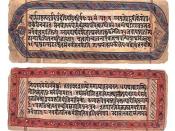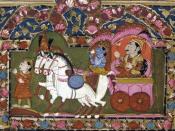Historical artifacts dating back to several early civilizations suggest that the idea of cosmos was valued among many cultures. Since the emergence of agriculture, humans began to live in small societies. Eventually, these small societies gave way to larger, more sophisticated and complex cultures (Duiker and Spielvogel, 7). New ideas gradually developed within these societies, thereby leading to the establishment of cultural, religious, and ethical standards. Analysis of excerpts from historical manuscripts that deal with the concept of afterlife in early Mesopotamian, Egyptian, and Aryan civilization suggest that different cultures had diverse views about cosmos and mankind's relationship to it.
Excerpts from The Epic of Gilgamesh, an epic that originated in Mesopotamian civilization, portray the Mesopotamian perception of afterlife. Life after death is revealed as dark, dull, and dreary. When an individual passes away, his soul enters "the palace of Irkalla, the Queen of Darkness" (Overfield, 9). This palace is described as a dwelling where "people sit in darkness; dust is their food and clay is their meat" (Overfield, 9).
The inhabitants of this palace are "clothed like birds with wings for covering, they see no light, they sit in darkness" (Overfield, 9). The kings of once powerful kingdoms now "stand like servants to fetch baked meats in the house of dust, to carry cooked meat and cold water from the water skin" (Overfield, 9). Overall, the Mesopotamian notion of afterlife is portrayed as negative. There are also no references to heaven or any other type of paradise where a soul may rest, thus leaving a dying person without any hope. Hence, afterlife is a concept that a Mesopotamian did not look forward to while he or she alive.
The Egyptians viewed the concept of afterlife from an entirely different perspective. They believed that a soul had a...


